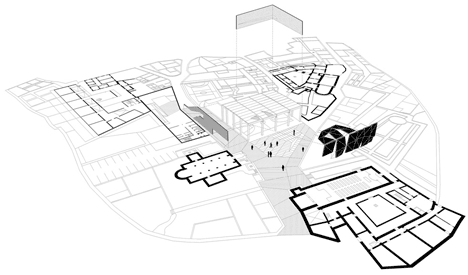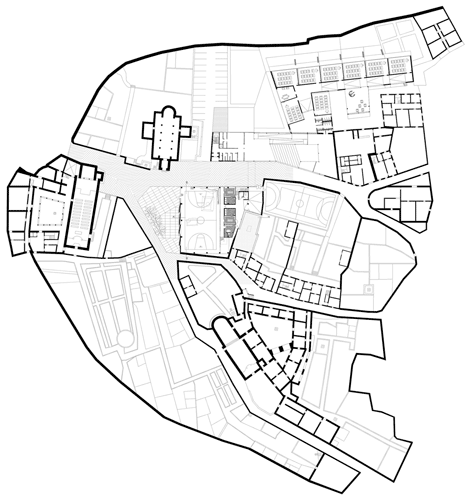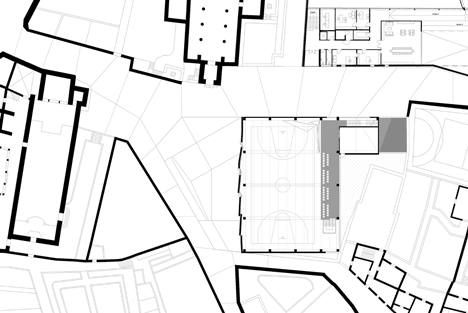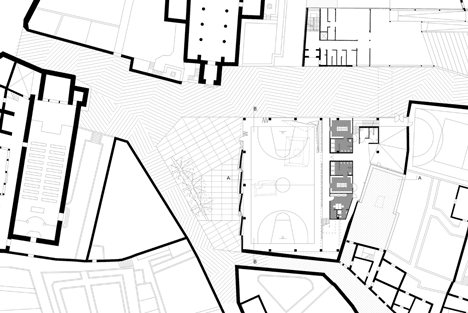Concrete-clad sports hall by Idis Turato features both faceted and bumpy facades
Faceted concrete blocks protrude from one side of this sports hall in Croatia, while its bumpy southern and western walls were made by casting concrete panels over a bed of stones (+ slideshow).
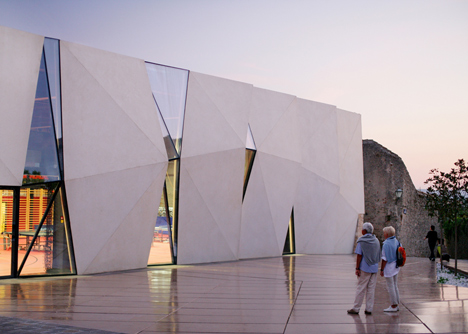
Designed by Croatian architect Idis Turato, the building is located in the small town of Krk, on the island of the same name, and it functions as both a sports hall for a primary school and an events space for the local community.
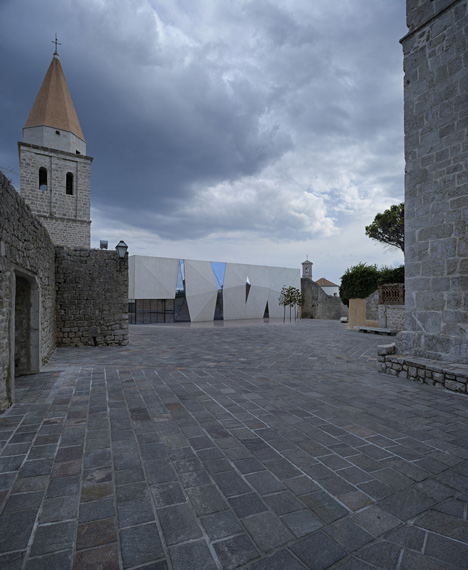
The building sits within a new public square surrounded by a mixture of churches, monasteries and school buildings, and the architect created different concepts for each of the building's elevations to correspond with the varying architectural styles.
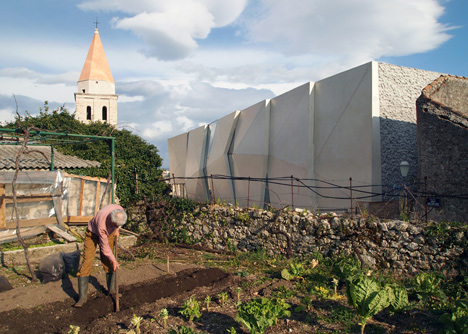
"One of the direct inspirations for all the facades and external walls of the hall were the existing walls of the surrounding monasteries," Turato told Dezeen.
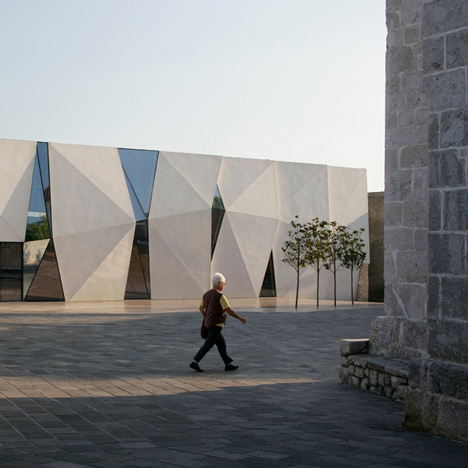
"The wall is the main concept of the hall, being different regarding the context that is in front of it," he continued. "Each one of those monastery walls, dating back from different periods, have different textures and also different sizes."
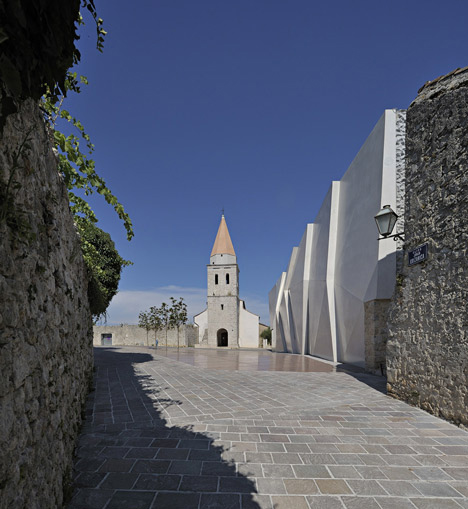
The northern side of the building fronts the town square and features a faceted concrete surface with a terrazzo finish and sliced openings that form windows.
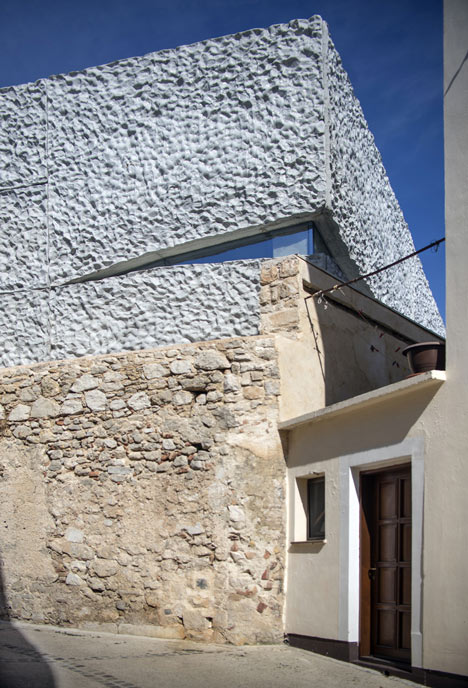
"The monoliths on the facade that face the square are monumental and dominant," said the architect. "They accentuate the representative character of the newly formed large public square in town, and are a direct reply towards the high towers on the square."

The southern and western facades are built over the archeological remains of another monastery and a chapel, which were uncovered during the construction process. These dry stone walls informed the design of the new concrete elevations built on top, which were cast against small stones to create a textured surface that inverts the appearance of the existing structures.
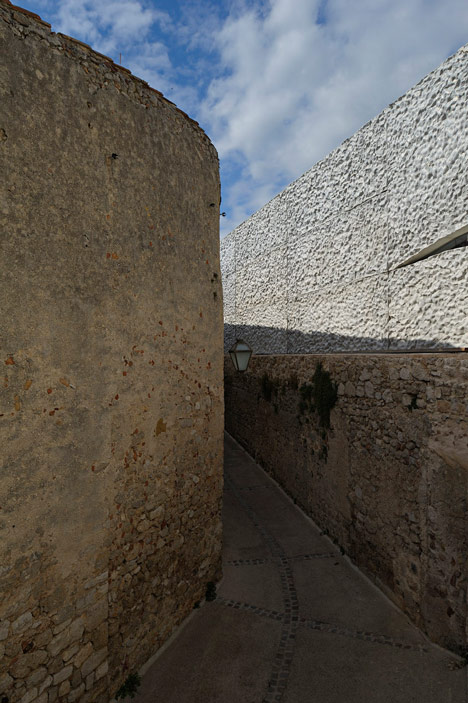
"These 'concrete innards', as we call them, are a negative of the dry stone walls," explained Turato. "Our wish was to make contemporary but simple concrete prefabricates that are visually different and recognisable, but also blend in as a continuation of the existing walls and their textures."
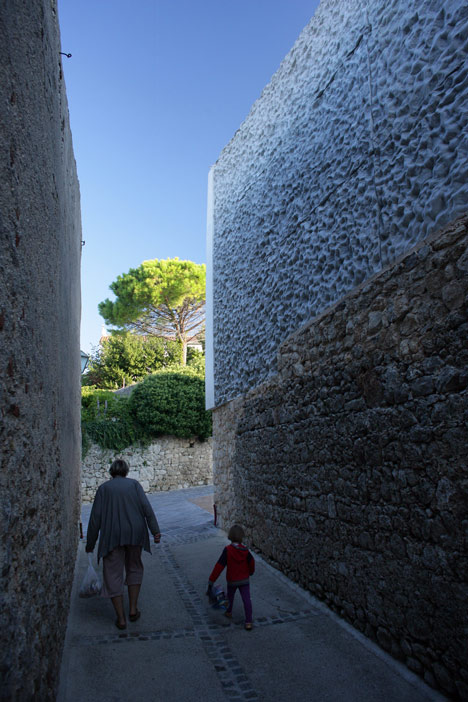
The remaining elevation faces the school and is finished in white render to match the appearance of its neighbour, which was designed by Idis Turato a few years earlier.
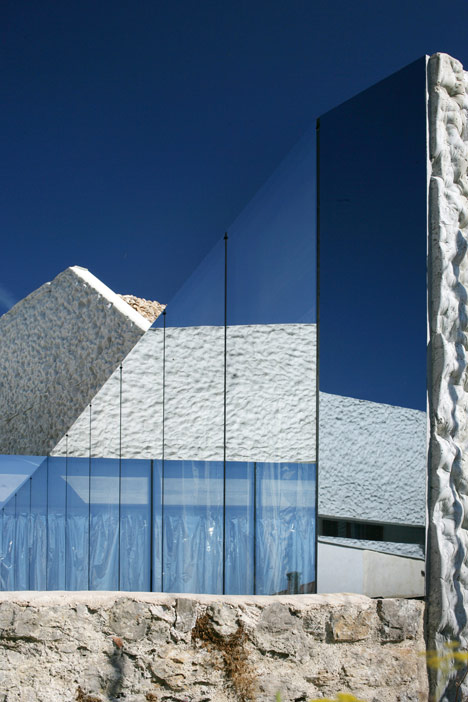
The interior of the building is decorated in bold colours that stand out against the raw concrete interior. A first-floor balcony provides seating during matches and events, plus an underground tunnel creates a private route into the school.
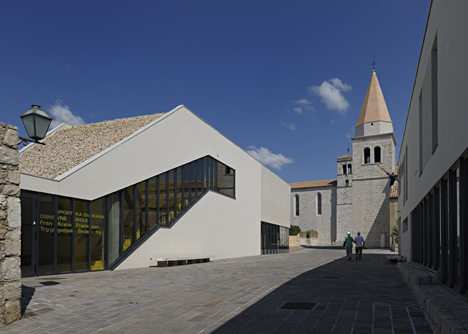
Slabs of red terrazzo provide the surface of the surrounding square, intended to contrast with the pale colour of the concrete walls.
Here's a project description from Turato Architecture:
Sports Hall and Public Square in Krk
One of the main focuses of the Turato Architects' Hall and Square project in Krk was to finish an architectural dialogue started way back in 2005, when Idis Turato completed an elementary school, Fran Krsto Frankopan (with his former studio "Randić Turato").
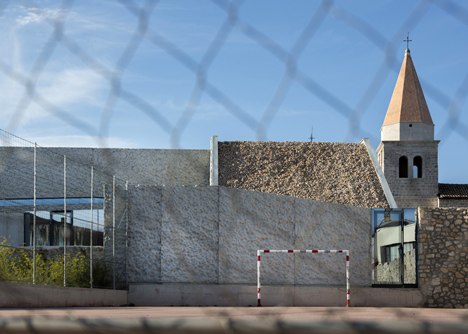
The new hall, which opened shortly before the summer of 2013, is situated in the very vicinity of the above-mentioned school, just across a narrow pedestrian street. The completion of the new sports building and public square was a crown achievement of the architect's quest to complete an integral urban ensemble on top of Krk's old town, thereby creating a newly defined focal point of high importance.
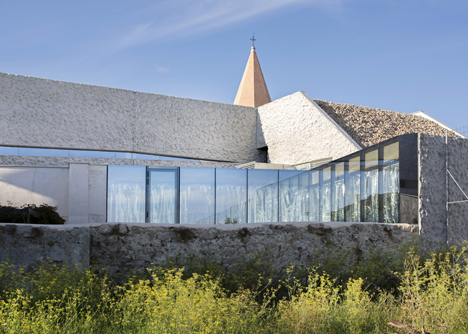
The newly built hall, aside from being a gym facility for the school pupils – who can now easily access it through an underground corridor - aims to meet demands of the local community as well, housing sports events as well as future cultural activities and public festivities on a larger scale. This is the reason why the north-eastern corner of the hall's facade opens up onto the square, providing functional continuity of passing through and enabling them to become almost one.
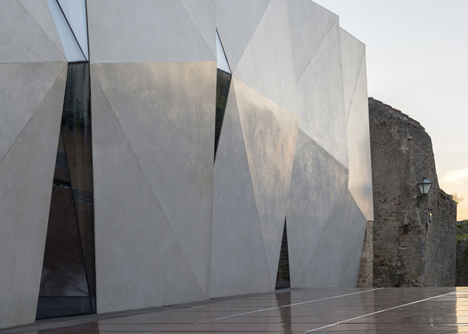
The school-hall-square assembly is surrounded by several churches and monasteries, as well as by two tall church towers that act as the square's vertical accents. Together, they all define and describe this wide public space, which, depending on occasion, can function both as a secular and an ecclesiastical pedestrian zone.
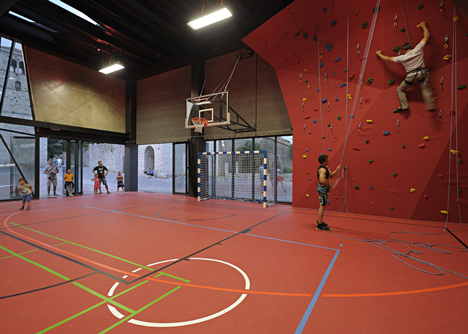
On the very site of the new hall there used to be an old student dorm, which had been used in past as a gym facility for the school. Prior to the hall construction it had to be demolished. The demolition, however, unearthed several new and important archaeological discoveries on the site, thus creating a whole new context for the hall itself.
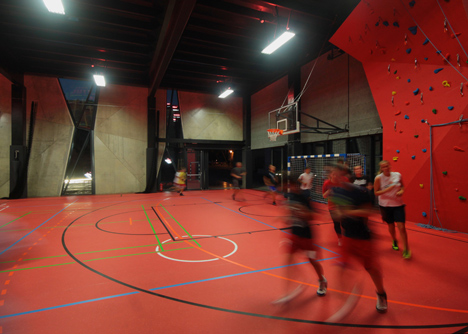
All that had been found on the site had to be preserved as discovered. The architects took this fact to be crucial in redefining the concept according to the new input. This affected directly the very organisational scheme of the project. The excavated and preserved church and monastery walls were to become integral parts of the new building, with new walls and facades of the hall emerging directly from the restored, older ones.
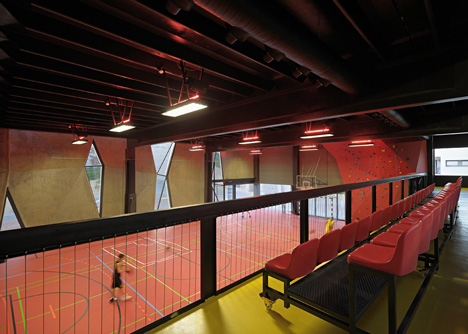
Yet another contextual element was important in forming the shape and size of the building. These are the high walls, seen throughout the old town of Krk, especially around the aforementioned monasteries, enclosing the town lots, lining the narrow streets of the town. These site-specific structures surround the hall itself as well.
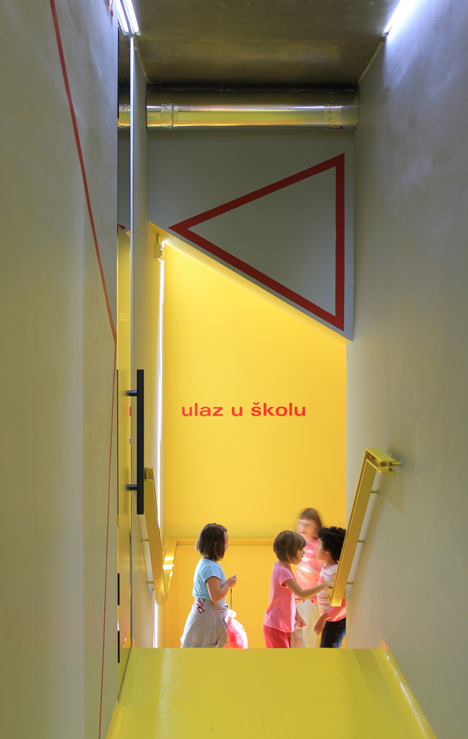
Behind these walls different stories are taking place daily, balancing between the public and the private, depending on the usage of the space enclosed. The high walls of the western hall facade, next to the Franciscan monastery, are then but a continuation of these town alleys. This is where the story of the walls, their origin, context and their shape began, resulting in variety of the facade walls, formally corresponding to the context, input and location.
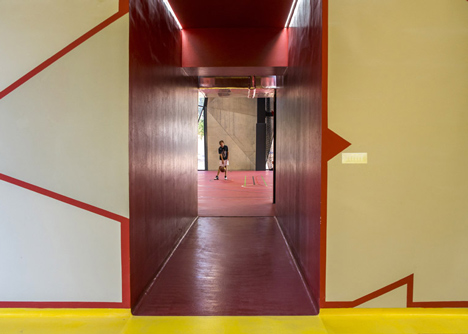
Although seemingly set "back", on secondary surfaces (the western alley and southern facade), the most recognisable and by far the most unique element of the hall itself is a wall consisting of original and striking prefabricated concrete elements. The architect named these the innards due to their origin and their fabrication, and the ambiguity of the impression they leave upon the viewer, due to a formal factor of its (un)attractiveness.
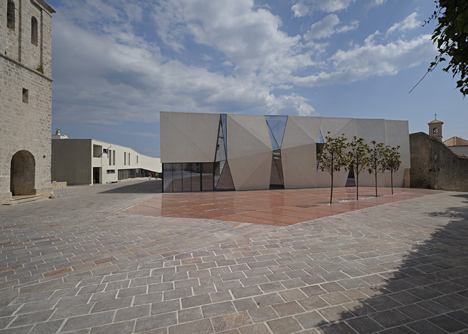
The innards are in fact unique precast elements produced as a negative of a dry stone wall, or more precisely - made by placing stones in a wooden mould, covering them with a PVC foil and pouring concrete over it all. In this way the negative of the stones forms the "face" of the precast element. This inverse building process, a simple and basic fabrication with a distinct visual impact, is an invention of the hall's author. It happened as a result of researching simple building materials with a crafty bricklayer, with whom the architect had collaborated on several projects in the past as well.
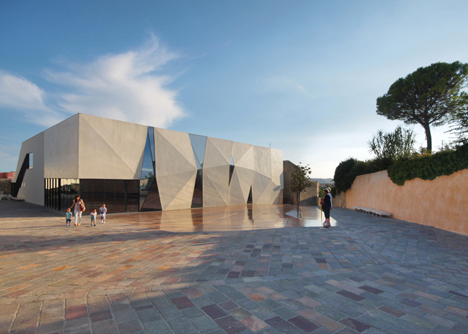
On the other hand, the most representative facade of the hall, the one visually dominating the square, is the facade constructed out of six impressively large concrete monoliths, weighing up to 23 tons. The monolithic blocks are finished off with a layer of 'terrazzo', which is an ancient technique usually used for floor finishes, requiring hours of polishing by hand.
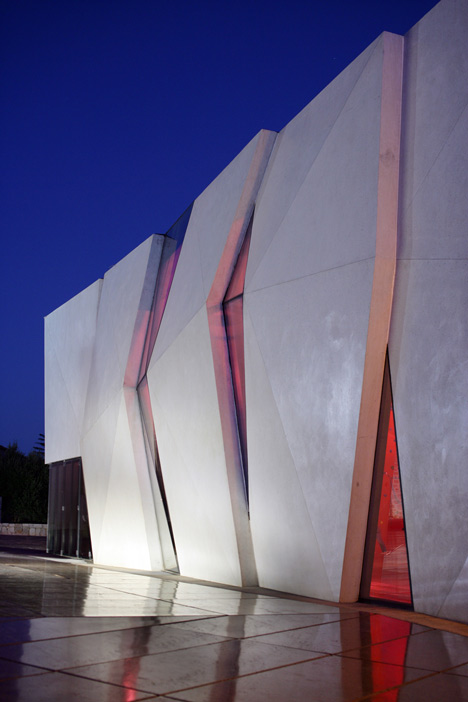
Here, however, the terrazzo is redefined and used vertically, fittingly renamed into a "vertical terrazzo". While this sudden vertical use of the finish creates a shiny and finely shaded facade, its "normal" use, on horizontal surfaces, is recontextualised and rethought once again, since this finish, usually 'reserved' for interiors, is now used for exterior surfaces of the public square.
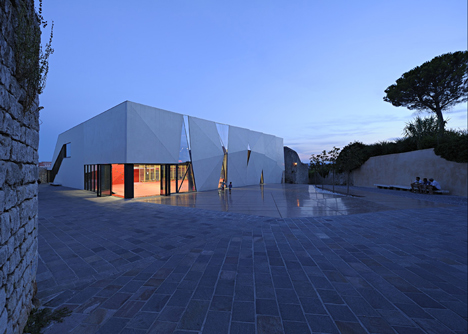
The red colour of the square's terrazzo floor panels is in contrast to the lightness of the hall's facade. Its smoothness and slip-resistance is achieved by application of a layer of epoxy after polishing.
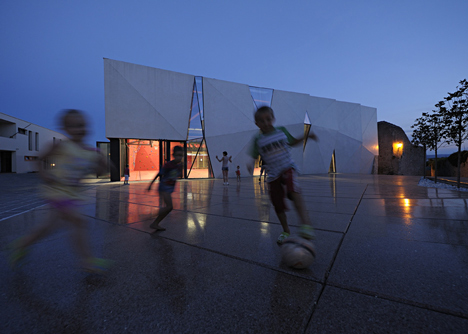
The fourth facade, facing the school, with its formal look and finish (done in plaster lime mortar) confirms that the new building remains in a direct communication with the existing educational facility, sharing its function.
